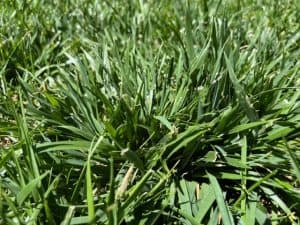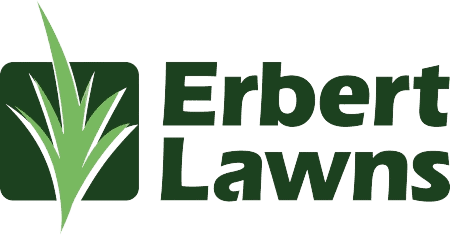Is This Tall Fescue or Crabgrass?
Are you confused about the difference between tall fescue and crabgrass? You’re not alone. More often than not tall fescue is confused for crabgrass and a person will ask themselves, “How do I get rid of this? Nothing is working!” This happens because they are treating the wrong thing and these two are very different and require different treatments to eliminate them. It’s one of the most common questions asked in the lawn care and landscaping industry, we will help you in understanding the difference.
- Tall Fescue
- Crabgrass
- Differences
- ...between tall fescue and crabgrass is their growth habits:
- Another difference is their texture and color:
- The easiest way to differentiate between tall fescue and crabgrass is by their appearance:
- Another way to tell the difference is by their root systems:
- It is important to pay attention to the surrounding environment:
- If the area is sunny and has more moisture:
- If the soil is moist:
- If the area has been recently disturbed:
- Finally, you can also tell the difference between tall fescue and crabgrass by noting the growth habits of each grass.
- Confusion
Tall fescue and crabgrass are two of the most common grasses found in lawns and gardens. Identifying them is important because they differ in their characteristics and can have different effects on a lawn’s health. Knowing how to recognize each grass will help in choosing the best grass for your lawn and in controlling unwanted growth.
Tall Fescue
…is a type of cool-season grass that is widely used in residential and commercial lawns across North America.
- It’s a hardy grass that is relatively drought tolerant, and it’s able to grow in a wide range of soil types and climates.
- It is known for its durability
- Tall fescue has narrow blades that are a blue-green color and can reach heights up to three feet.
- It has a deep root system and is quite tolerant of drought and other extreme weather conditions.
- It is also known to be more disease and insect resistant than some other types of grass.
- Tall fescue is a bunch-type grass, meaning it grows in clumps rather than spreading out like turf grass.

Crabgrass
…on the other hand, is an annual weed that can quickly take over a lawn if it’s not properly managed.
- It’s a summer grass variety that germinates in the spring, and it grows quickly and aggressively.
- It can quickly crowd out other plants in your lawn.
- Crabgrass has a coarse texture and is usually yellow-green in color.
- The leaves are also softer and more delicate than those of tall fescue.
- It can grow up to two feet in height and has long, thin leaves that are typically wider at the base.
- It has a low-growing, spreading habit, forming a thin, light green turf.
- The blades of crabgrass are much wider than those of tall fescue, typically up to ½ inch in width.

Differences
…between tall fescue and crabgrass is their growth habits:
-
- Tall fescue is a perennial grass that grows slowly
- Crabgrass is an annual grass that germinates and grows quickly.
-
Another difference is their texture and color:
- Tall fescue
- Tall Fescue has a fine texture and dark green.
- Crabgrass
- Crabgrass has a coarse texture and is a light, yellow-ish color.
- Tall fescue
-
The easiest way to differentiate between tall fescue and crabgrass is by their appearance:
- Tall Fescue
- Tall fescue has a blue-green color,
- Tall fescue has fine, narrow blades with a rough texture,
- Tall fescue has a darker, more uniform color
- Crabgrass
- Crabgrass has wider, softer blades
- Crabgrass tends to be lighter and more mottled
- Crabgrass has a yellow-green color
- Tall Fescue
-
Another way to tell the difference is by their root systems:
- Tall fescue
- Tall Fescue has a deep root system, which helps in making it more drought-tolerant
- Crabgrass
- Crabgrass has a shallow root system, which can quickly dry out in hot weather.
- Tall fescue
-
It is important to pay attention to the surrounding environment:
-
- If the area has a lot of shade:
- Then it is more likely to be tall fescue.
- If the area has a lot of shade:
-
-
-
- If the soil is dry:
- Then it is more likely to be crabgrass.
- If the soil is dry:
-
-
If the area is sunny and has more moisture:
- Then it is more likely to be tall fescue.
-
If the soil is moist:
- Then it is more likely to be crabgrass.
-
If the area has been recently disturbed:
- Then it is more likely to be crabgrass.
-
Finally, you can also tell the difference between tall fescue and crabgrass by noting the growth habits of each grass.
- Tall fescue
- Tall fescue forms clumps and grows in an upright position
- Tall fescue can grow up to 3 feet tall
- Crabgrass
- Crabgrass typically stays low to the ground
- Crabgrass has a low-growing, spreading habit.
- Tall fescue
Confusion
…between these two types of grass is understandable, considering their similarities. Both are cool-season grasses, and they both grow in a wide range of soil types and climates. The biggest difference is their growth habits and textures, so it’s important to pay attention to these details when trying to identify them.
If you’re having trouble distinguishing between tall fescue and crabgrass, it’s best to consult with a lawn care professional. Here at Erbert Lawns we can help you identify the type of grass in your lawn and provide you with the best management strategies for controlling and preventing crabgrass. Please call or text us if you need help, 303-948-6631.











